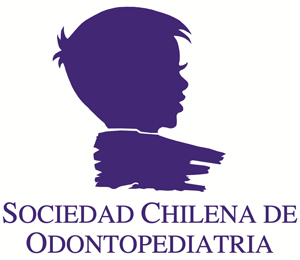Órgano oficial de difusión
científica de
Sociedad de Periodoncia
de Chile
Sociedad de Implantología Oral
de Chile
![]()
Sociedad de Prótesis y
Rehabilitación Oral de Chile

Sociedad Chilena de
Odontopediatría

Sociedad de Ortodoncia
de Chile

Federación Ibero Panamericana
de Periodoncia
![]()
Asociación Iberolatinoamericana
de Rehabilitación Oral (AILARO)
Indexada en:
Scielo, ScienceDirect,
Latindex, Redalyc
Rev Clin Periodoncia Implantol Rehabil Oral. 2009;2:59-62
TRABAJO DE INVESTIGACIÓN [PDF![]() ]
]
Expresión de CCL-7 y CCR-5 en Lesiones Periapicales
CCL-7 and CCR-5 Expression in Apical Lesions
Dezerega A1, Oyarzún A2, Dutzan N1, Osorio C1, Mundi V1, Hernández M1
1Laboratorio de Biología Periodontal, Facultad de Odontología, Universidad de Chile. Chile.
2Unidad de Biología Oral, Facultad de Odontología, Universidad Finis Terrae. Chile.
Resumen
La quimiotáxis es un fenómeno clave en la patogenia de las Lesiones Periapicales de origen endodóntico (LPAe), ya que a través de ella se produce la migración de células inflamatorias hacia el tejido periapical. CCL-7 es una quimioquina cuya población blanco la comprenden principalmente monocitos-macrófagos, ejerce su acción a través de la unión a distintos receptores, entre ellos CCR-5, y hasta la fecha su expresión en LPAe no ha sido estudiada.
Objetivo
Observar la presencia de CCL-7 y CCR-5 en biopsias de LPAe y estudiar la expresión de CCL-7 en Periodontitis Apical (PA).
Método
Muestras de exudado periapical (EP) fueron obtenidas de canales de dientes sometidos a terapia endodóntica. El diagnóstico de estos dientes fue Peridontitis Apical Sintomática (PAs) (n=15) y Periodontitis Apical Asintomática (PAa) (n=15). Se realizó “immunowestern blot” para determinar la expresión de CCL-7 en estas muestras. La intensidad de las bandas fue medida a través de análisis densitométrico. Para determinar la expresión de CCL-7 y CCR-5 en LPAe se obtuvieron biopsias de cirugías periapicales, se procesaron con técnicas de rutina y diagnosticaron histopatológicamente como granulomas periapicales N=8 (GP) o quistes radiculares inflamatorios N=2 (QRI), y luego se analizaron con inmunohistoquímica. Las muestras fueron observadas con microscopio óptico. Como control se utilizó ligamento periodontal apical sano obtenido de dientes con indicación de extracción por ortodoncia (N=10).
Resultados
CCL-7 se expresa en EP de PA y no en sanos. A su vez, tanto CCL-7 como CCR-5, se observa en LPAe. La presencia de CCL-7 y CCR-5 en GP y QRI se localiza mayoritariamente en el infiltrado inflamatorio. La expresión de las moléculas en estudio no fue detectada en controles sanos.
Conclusión
CCL-7 podría tener un rol en la patogénesis de las LPAe, probablemente estimulando quimiotaxis.
Palabras clave: Quimiotáxis, lesiones periapicales, periodontitis apical, CCL-7, CCR-5.
Abstract
Introduction
One of the key phenomena in Apical Lesions (AL) pathogenesis is chemotaxis. CCL-7 is a very potent chemoattractant for monocytes, and CCR-5 corresponds to one of its receptors. Until now, CCL-7 and CCR-5 expression in AL remains unknown. Objectives: To study the expression of CCL7 and CCR-5 in AL.
Methods
Periapical exudates (PE) samples were collected from root canals during routine endodontic treatments from teeth with diagnosis of symptomatic (n=15) and asymptomatic Apical Periodontitis (AP) (n=15), and “immunowestern blot” was conducted to assess the expression of CCL-7. The intensity of the bands was measured by densitometric analysis. As controls, homogenized tissue from healthy periapical ligaments was obtained during teeth extraction for orthodontic reasons (n=10). To determine the expression of CCL-7 and CCR-5 in AL, biopsies from teeth with clinical diagnosis of chronic AP were obtained during apical surgery procedures, processed by routine technique and histopathologically diagnosed as Apical Granuloma (AG) (n=8) or Radicular Cyst (RC) (n=2) and then, analyzed by immunohistochemistry. The samples were examined with light microscope. As controls, biopsies from healthy periapical ligaments obtained during teeth extraction for orthodontic reasons were used.
Results
CCL-7 was highly expressed in PE samples, and its expression could not be observed in healthy controls. The presence of CCL-7 and CCR-5 in AG and RC is mainly located to the inflammatory infiltrate. No expression was observed in healthy controls.
Conclusions
CCL-7 and CCR-5 may play a role in AP pathogenesis, may be by stimulating chemotaxis.
Key words: Chemotaxis, apical lesions, apical periodontitis, CCL-7, CCR-5.
El Texto completo solo está disponible en PDF 